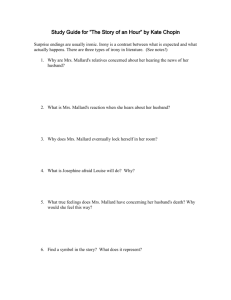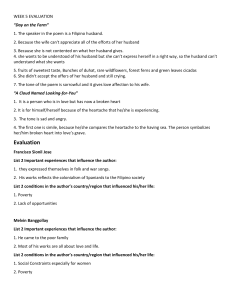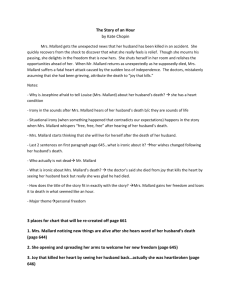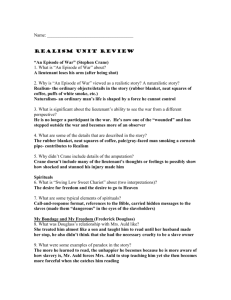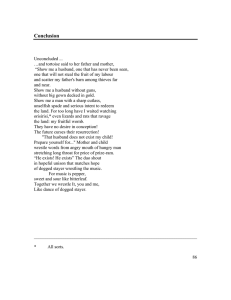The Story of an Hour
advertisement
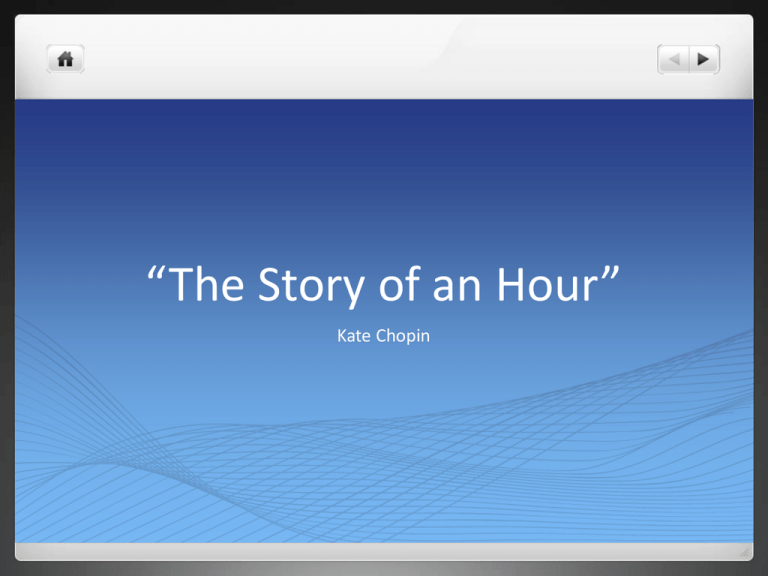
“The Story of an Hour” Kate Chopin An Untimely Death “Knowing that Mrs. Mallard was afflicted with a heart trouble…” (425); what does this immediately make you think? Her sister Josephine and her husband’s friend Richards want to carefully break the news. Can something like that be done carefully? What could the open window in Mrs. Mallard’s room represent? At first, she acts typically, sobbing and locking herself away from everyone else. However, there is more going on beneath the surface. Torn Thoughts Why would she keep muttering “free” after realizing her husband is dead? She realized she would be upset at the funeral when she saw the “kind, tender hands folded in death; the face that had never looked save with love upon her, fixed and gray and dead” (426). This would be a typical response to the death of a spouse. However, “she saw beyond that bitter moment a long procession of years to come that would belong to her absolutely” (426). What does this indicate? What has happened while she has been married? How does she feel? “There would be no powerful will bending hers” (426). How much of her life has been controlled by her husband? Is this a feminist author making a stand? “And yet she had loved him---sometimes. Often she had not” (426). What is she starting to realize in regards to her feelings towards her husband? Her sister is worried she is in the room making herself ill. What does this tell you abut Louise’s life in recent years? Surprise! Right as she gets her thoughts together, the front door opens and her husband enters. He was not on the train (we don’t know why) and is definitely alive. Louise has a heart attack and dies. They claim “she died of heart disease---of joy that kills” (427). Is there another possibility? Think about the title. What does it mean? What does it actually represent?
